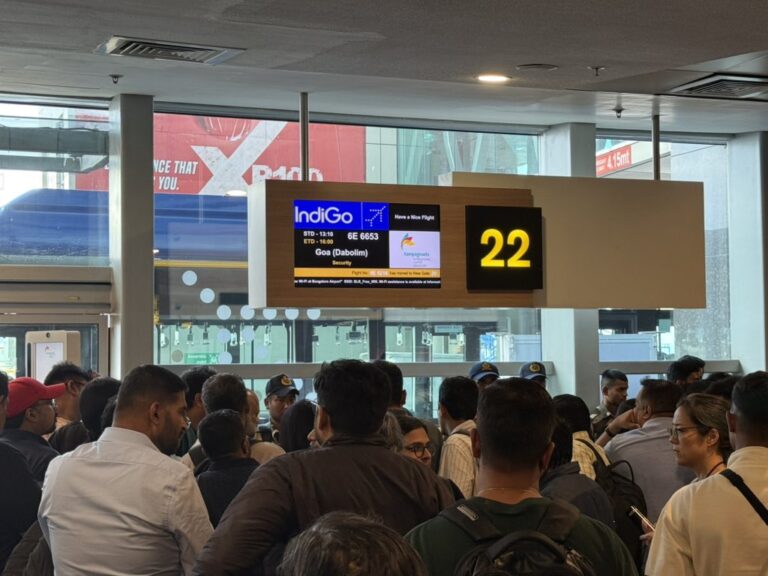
New Delhi: The Union Cabinet today approved a scheme to provide Rs.1624 crore over five years as subsidy to Indian Shipping companies in global tenders floated by Ministries and CPSEs for import of government cargo in the following manner:
-
- For a ship which is flagged in India after 1st February, 2021 and is less than 10 years at the time of flagging in India, the subsidy support would be extended @15% of the quote offered by the L1 foreign shipping company OR the actual difference between the quote offered by the Indian flag vessel exercising ROFR and the quote offered by the L1 foreign shipping company, whichever is less. For a ship which is flagged in India after 1st February, 2021 and which is between 10 to 20 years old at the time of flagging in India, the subsidy support would be extended @10% of the quote offered by the L1 foreign shipping company OR the actual difference between the quote offered by the Indian flag vessel exercising ROFR and the quote offered by the L1 foreign shipping company, whichever is less.
The rate at which the above subsidy support is extended would be reduced by 1% every year, till it falls to 10% and 5%, respectively, for the two categories of ships mentioned above.
- For existing Indian flagged ship which is already flagged and less than 10 years old on 1st February 2021, the subsidy support would be extended @10% of the quote offered by the L1 foreign shipping company OR the actual difference between the quote offered by the Indian flag vessel exercising ROFR and the quote offered by the L1 foreign shipping company, whichever is less. For existing Indian flagged ship which already flagged and between 10 to 20 years old on 1st February 2021, the subsidy support would be extended @5% of the quote offered by the L1 foreign shipping company OR the actual difference between the quote offered by the Indian flag vessel exercising ROFR and the quote offered by the L1 foreign shipping company, whichever is less.
- The provisions of this subsidy support would not be available in case where an Indian flagged vessel is the L1 bidder.
- The budgetary support would be provided directly to the Ministry/Department concerned.
- The subsidy support would be extended only to those ships which have bagged the award after the implementation of the scheme.
- Flexibility in allocation of funds for expenditure from one year to another and within the various Ministries/departments of the scheme.
- Ships older than 20 years would not eligible for any subsidy under the
Scheme.
- In view of the enlarged scope of the Scheme this Ministry shall seek
- allocation of such additional funds from the Department of Expenditure asmay be required,
- The scheme would be reviewed after 5 years.
Background:
a) Despite having a 7,500 km long coastline, a significant national EXIM trade that is steadily growing on an annual basis, a policy of 100% FDI in shipping since 1997 and Indian shipping industry and India’s national fleet is proportionately small when compared with its global counterparts.
b) Currently the Indian fleet comprises of a meagre 1.2% of the worid fleet in terms of capacity. The share of Indian ships in the carriage of India’s EXIM trade has drastically declined from 40.7% in 1987-88 to about 7.8% in 2018-19. This has led to an increase in foreign exchange outgo on account of freight bill payments to foreign shipping companies, to the tune of around USD 53 billion in 2018-19 and approximately USD 637 billion during the last 13 years.
c) Indian flagged ships mandatorily engage Indian crew and comply with Indian taxation and corporate laws. The operating costs of Indian ships are thus much higher as compared to those of foreign ships. The foreign voyage the cost of operation of an Indian vessel is higher by around 20%. This difference in operating costs arises on account of higher costs of debt funds, shorter tenure of loans, taxation on wages of Indian seafarers engaged on Indian ships, IGST on import of ships, blocked GST tax credits, discriminatory GST on Indian ships providing services between two Indian ports; all of which are not applicable to foreign ships providing similar services. On the other hand, importing a shipping service by an Indian charterer is cheaper than contracting the services of a local shipping company.
d) Though the Government supports a policy of imports on FOB, in reality a major portion of the dry bulk imports such as Fertilizers and Coal is allowed to be imported on GIF basis. Almost 35% of the crude oil imports are also taking place on GIF basis. All of this leads to a loss of opportunity to participate in the market to transport Indian cargo.
e) Since Indian ships are less competitive while compared to their foreign peers, therefore, the Right of First Refusal (ROFR) policy has not been able to fuel growth of Indian tonnage. Data collected from the Indian National Ship owners Association (INSA) reflects that it issued NOCs in 95% of the cases processed under the ROFR mechanism. Moreover, ROFR does not ensure bankable long-term contracts and it is only an opportunity to match the rate provided by a foreign shipping companies which enjoy a competitive advantage due to lower operating costs. The policy of Right of First Refusal for Indian ships will only be beneficial provided Indian ships are made competitive.
f) A policy to promote the growth of the Indian shipping industry is also necessary because having a bigger national fleet would provide economic, commercial, and strategic advantages to India. A strong and diverse indigenous shipping fleet will not only lead to foreign exchange savings on account of freight bill payments made to foreign shipping companies but would also reduce excessive dependence on foreign ships for transporting India’s critical cargoes. The other benefits of a larger Indian fleet include increase in training opportunities for Indian seafarers, increased employment for Indian seafarers, increase in collection of various taxes, development of ancillary industries, and improved ability to borrow funds from banks.
g) The subsidy support proposed to be provided to Indian shipping companies would enable more Government imports to be carried on Indian flag ships. Further, it would also make it more attractive to flag merchant ships in India as their current relatively higher operating costs would be offset to a large extent through the subsidy support. This would lead to an increase in flagging and would link access to Indian cargo to investment in Indian ships.
– global bihari bureau





